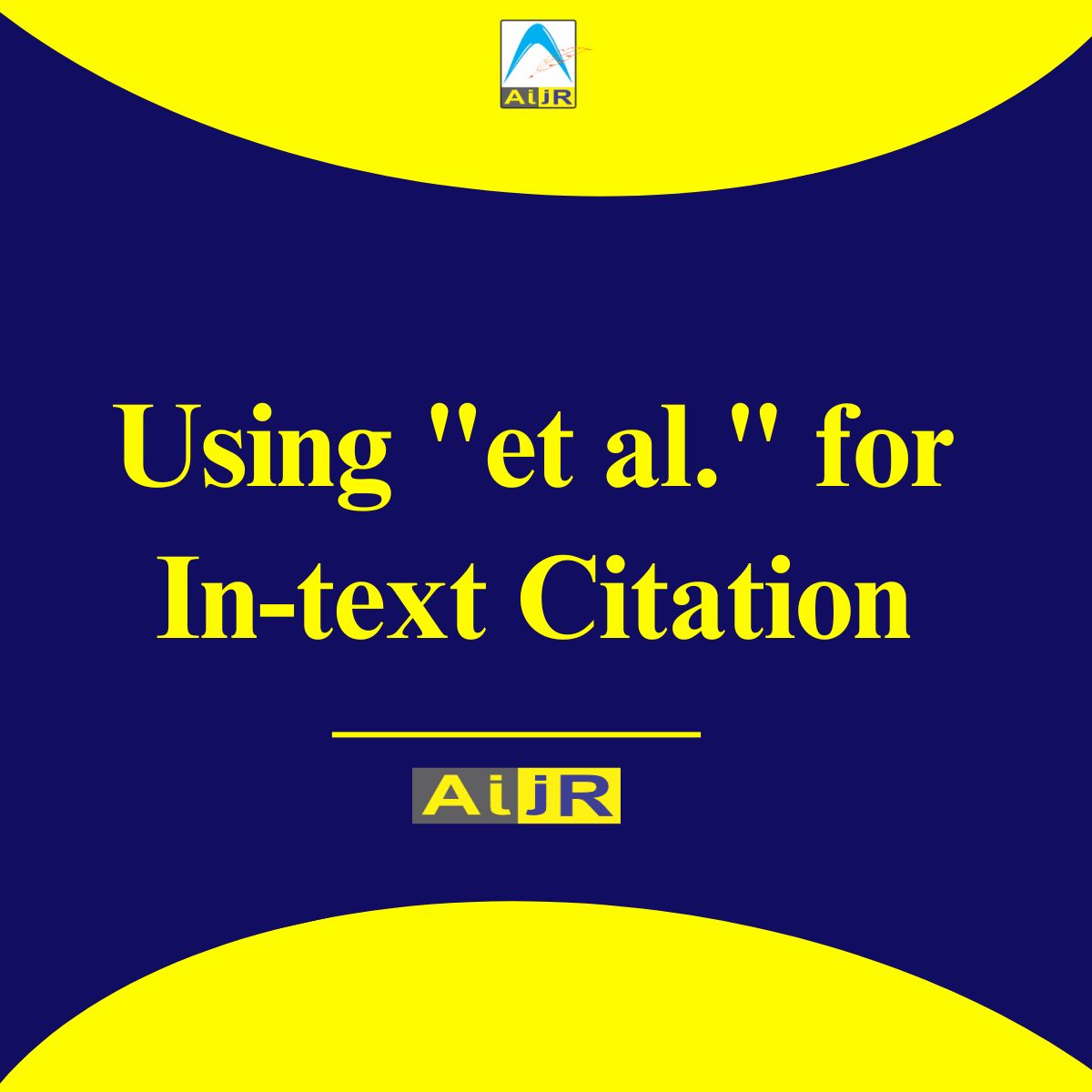et al. is a Latin abbreviation that stands for “et alia” or “et alii,” which translates to “and others” in English..” It is commonly used in academic writing for in-text citations and reference lists when citing works with multiple authors. The use of “et al.” allows the writer to save space and avoid listing all the authors’ names in the citation, while still providing enough information for the reader to locate the source.
“et al.” is used for in-text citations to indicate that there are other authors in addition to the ones listed in the citation. It is commonly used when citing works with three or more authors. The usage of “et al.” varies depending on the citation style being used.
It’s important to note that there are different citation styles, such as MLA or Chicago, and each one might have different requirements for in-text citations. It is important to check the citation style guide you are using for specific guidelines on the use of “et al.” in in-text citations.
In academic writing, when using the American Psychological Association (APA) citation style, you would use “et al.” in in-text citations for works with three or more authors. For example, if you are citing a paper with four authors, you would list the first author’s name followed by “et al.” in the in-text citation. The reference list entry for the same source would list all authors.
For example,
In-text citation: (Azuwike et al., 2023)
Reference list: Azuwike, O. D., Duru, P. N., Nkwam-Uwaoma, A. O., Nguhemen, C. R., Eboh, E., & Emetumah, F. C. (2023). Predictors of Households’ Adoption of Gas Cooking Stove in Some Rural Communities of Abia and Ebonyi States, Southeast Nigeria. Advanced Journal of Social Science, 12(1), 16–29.
Different Rules for Parenthetical Citations and Narrative Citations
The usage of “et al.” can differ slightly between parenthetical citations (within parentheses) and narrative citations (integrated into the sentence).
- Parenthetical Citation: (Azuwike et al., 2023)
- Narrative Citation: Azuwike et al. (2023) found that…
et al. is commonly used in academic writing to refer to a list of authors when citing a source with multiple authors in in-text citations. Remember, consistency and clarity are key in academic writing. Always follow the citation style guide recommended by your institution or the publisher you are submitting your work to.
Significance of et al. in Journal Article Writing
The use of “et al.” in journal article writing serves several significant purposes, primarily related to readability, brevity, and clarity in citing sources with multiple authors. Here are some key reasons for its significance:
- Conciseness: Journal articles often contain numerous citations, and listing all authors’ names every time can make the text cluttered and lengthy. “et al.” allows authors to include a citation while saving space and maintaining a more concise writing style.
- Readability: Long lists of authors’ names can be distracting for readers, especially in-text. “et al.” helps maintain the flow of the text and reduces interruptions caused by extensive author lists.
- Efficiency: In-text citations are used to direct readers to the corresponding entry in the reference list. By using “et al.,” authors can minimize the effort required to include multiple authors’ names and focus on conveying the main content of their work.
- Consistency: “et al.” provides a standardized way to refer to multiple authors, ensuring consistency throughout the article and making it easier for readers to identify and understand citations.
- Multiple Citations: When citing multiple sources in a single sentence or paragraph, “et al.” helps avoid repetition and confusion by streamlining the presentation of multiple authors.
- Clarity: In cases where the number of authors is substantial, using “et al.” prevents the in-text citation from becoming overly cumbersome and confusing, thereby enhancing the clarity of the text.
- Style Guidelines: Many academic disciplines and publishing houses adhere to specific style guidelines (such as APA, MLA, Chicago, etc.), which recommend the use of “et al.” as a standard practice. Adhering to these guidelines ensures that your work is consistent with the conventions of your field.
- Cross-Referencing: When readers encounter “et al.” in an in-text citation, they understand that the source has multiple authors. They can then consult the full reference in the bibliography for more detailed information about the authors, publication, and other relevant details.
It’s important to note that the significance of “et al.” may vary depending on the specific field of study, the preferences of the journal or publisher, and the citation style being used. Always refer to the specific style guidelines recommended by the journal you’re submitting to in order to ensure accurate and consistent usage of “et al.” in your journal article writing.
